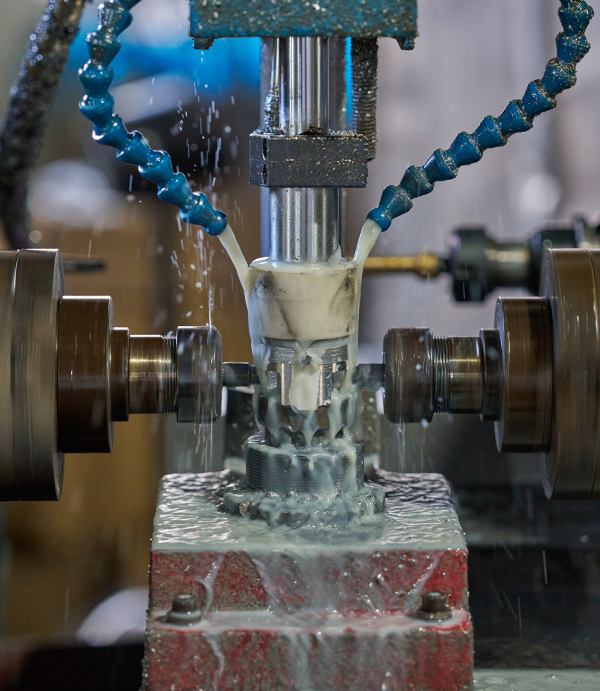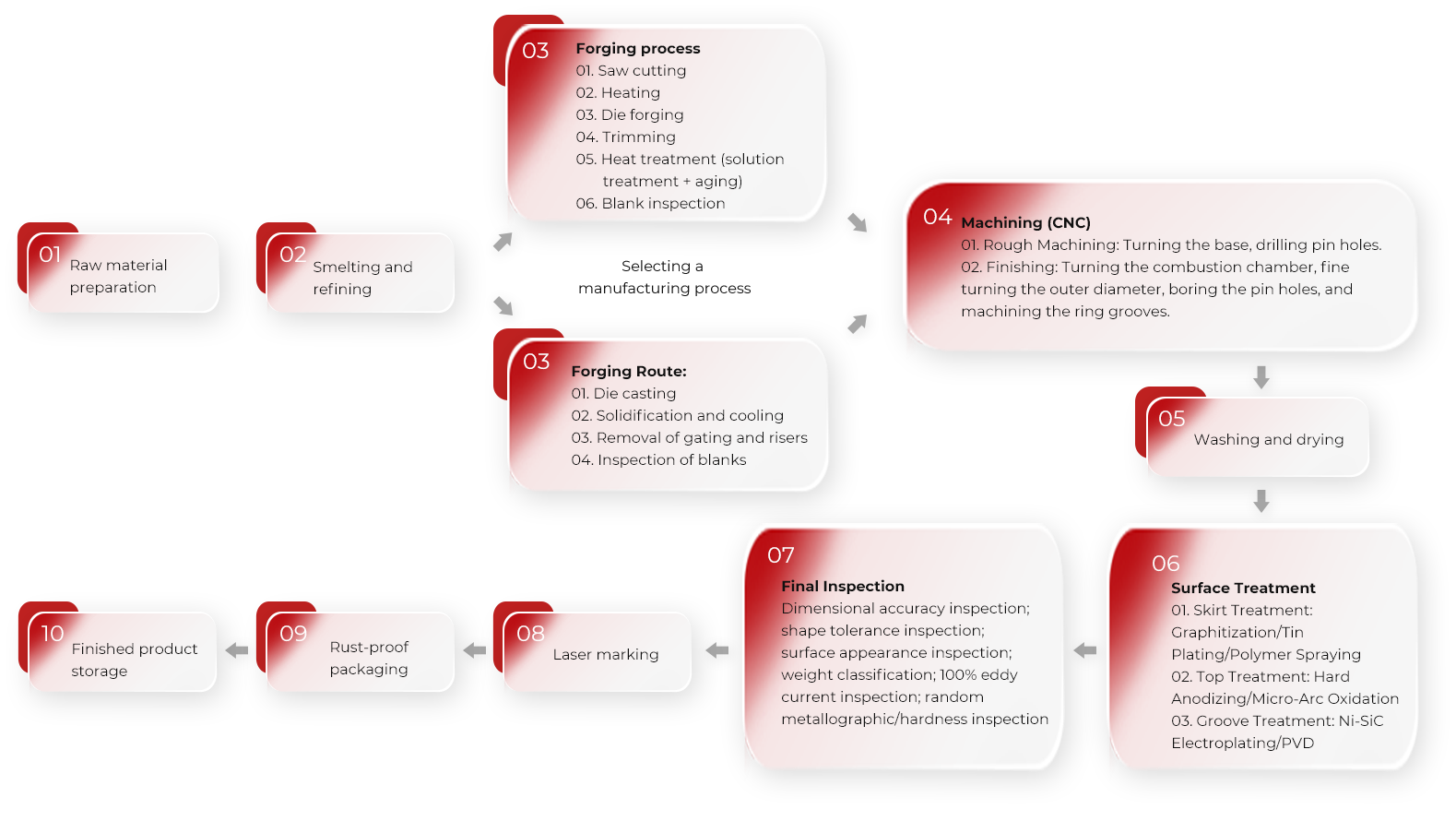The coating process on the piston surface is crucial to the performance, durability, and efficiency of an engine. Different parts (such as the skirt, head, and ring groove) operate in distinct environments and have varying requirements, so different coating technologies are employed.
| Part | Coating Type | Main Material/Process | Core Function | Applicable Scenarios |
| Piston Skirt | Solid Lubricating Film | Graphite, MoS₂ | Reduce friction, prevent scuffing, improve running-in property | Traditional process, general engines |
| Tungsten Disulfide (WS₂) Coating | WS₂ Solid Lubricating Film | Reduce friction, high temperature resistance, oxidation resistance | Pistons, rings, pins under high-temperature conditions | |
| Tin Coating (Sn Coating) | Electroless Tin Plating | Improve running-in property, good oil affinity, prevent stagnation | Aluminum piston skirts | |
| Piston Head | Hard Anodic Oxidation | Al₂O₃ Oxide Film | High temperature resistance, wear resistance, corrosion resistance, heat insulation | Piston heads of gasoline engines and diesel engines |
| Micro-arc Oxidation (Ceramic Layer) | Ceramic Layer (e.g., Al₂O₃) | High hardness, resistance to high-temperature impact, corrosion resistance | Piston heads of high-performance engines | |
| Ring Groove Area | Ni-SiC Composite Electroplated Layer | Nickel-based Silicon Carbide Composite Coating | Enhance hardness and wear resistance | Aluminum piston ring grooves |
Coating process
introduction

A common solid lubricating coating applied to the piston skirt.
It is mainly used for the piston skirt, aiming to greatly improve the initial running - in performance of the engine.
It is mainly used on the top (head) of the piston to form a hard, heat-resistant and insulating aluminum oxide ceramic layer.
It is also known as Plasma Electrolytic Oxidation (PEO), an advanced version of anodization. It is used to produce ceramic layers that are thicker, harder, and have stronger adhesion, and is mainly applied to piston crowns and ring grooves.
Industry Development Years
Product Specifications

KEEP IN TOUCH


 Français
Français 中文简体
中文简体 Español
Español


